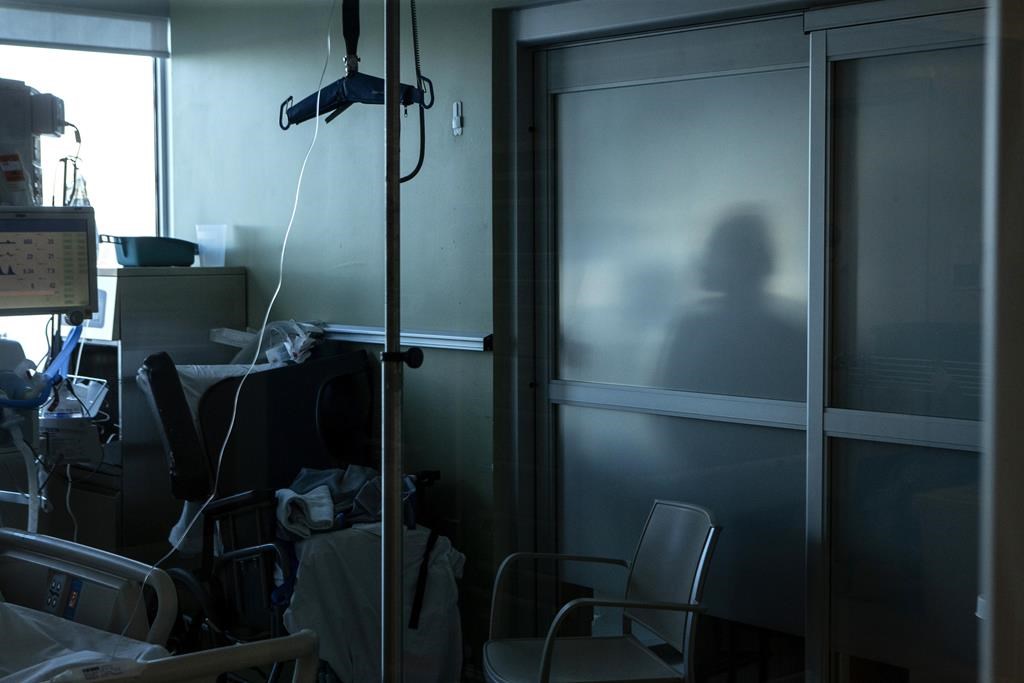As pressures across the province’s health-care system continue to surge, the president of the Ontario Medical Association (OMA) is highlighting a specific need for the London, Ont., area while the region’s largest hospital reports an increasing number of nursing vacancies.

Meeting with physician leaders Thursday at the InterCommunity Health Centre, Dr. Rose Zacharias told Global News that the city is in desperate need of at least 72 physicians.
“We know that physicians are retiring. We know physicians are battling burnout. The administrative burden is really disproportionate to the amount of clinical work that doctors do,” she said.

Zacharias stated that the province “needs to alleviate some of the cumbersome responsibilities that still seem to be on a doctor’s desk throughout their workday.”
“We need more medical school spots, a way to license internationally trained physicians that are here in Ontario already working with our college and the government to expedite that process, and team-based care,” she said. “We do have some solutions, but we need to be implementing them because there are so many people without a family doctor (and) so many people that can’t access a specialist right now. It’s just wrong.”
A national poll released by Research Co last week found that a third of Canadians believe a shortage of doctors and nurses is the biggest issue facing the health-care system.
In September 2022, the London Health Science Centre (LHSC) reported 442 registered nursing vacancies and about 100 for registered practical nurses. Roughly seven months later, the nursing vacancy rate at the hospital is around 500.
LHSC has 388 active postings for registered nurses. Of those, 321 are true vacancies filling an existing position and the others are additional postings for future workplace planning.
Additionally, the hospital has 116 active job postings for registered practical nurses, including 60 that are filling existing roles. Those remaining are deemed new and necessary to expand capacity and provide more patient care, LHSC said.

To address the ongoing local shortage of front-line workers, the hospital is boosting overtime pay for nurses by 30 per cent, among other recruitment strategies.
“The challenges we face within the health system are many and LHSC sees nurses and the nursing profession as playing a key role in addressing those challenges,” Heather Lokko, LHSC corporate nursing executive, said in a statement.
LHSC is offering nurses double-time pay for overtime hours, up from time-and-a-half pay for extra work that was introduced in November 2022.
“We know that each person will have different needs and obligations both at work and outside of work, and different capacities to accept overtime,” Lokko said. “We strongly encourage all nurses to pay close attention to their own physical and mental health when deciding on whether to work overtime or not.
“The global nursing shortage we are facing today is a significant challenge that we need to work together as a system to address.”
In a statement to Global News, LHSC officials said the hospital has recruited nearly 300 nurses in the last year under the Ontario Community Commitment Program for Nurses (CCPN) – a provincial program that provides newly eligible registered nurses, registered practical nurses and nurse practitioners with $25,000 grants in exchange for serving a two-year commitment in a designated community.
LHSC recruited 205 nurses under the CCPN since its creation in 2022. Since filling those positions, the hospital was approved for an additional 200 and has filled roughly 100 of the new posts with the hope of filling those remaining prior to the end of the program in early 2024.
However, staffing shortages are not the only “crack in the health-care system” LHSC is facing.

Last week, MPP for London North Centre Terence Kernaghan released a statement “demanding answers” from the provincial government as to why average wait times for pediatric MRIs at Victoria Hospital hit a staggering 299 days for Priority 4, or non-emergent, patients – the longest in Ontario, according to provincial data.
The second-highest wait time is 194 days at the Waterloo site Grand River Hospital Corporation, while the provincial average stands at around 80 days.
According to Ontario Health, Priority 4 patients should be scanned within a target time of 28 days.
“How is this acceptable?” Kernaghan asked Premier Doug Ford in the legislature, adding that “the time for pointing fingers is over.”
“It’s really heartbreaking for families and concerning when they’re waiting for their health care, and especially with a young child and not being able to explain why they have to wait,” he said. “It’s time that they (provincial government) fund our publicly delivered and publicly funded health care properly, not try to make room for somebody to make a profit off of somebody’s ill health.”
A spokesperson for the minister of health told Global News “the government knows wait times for surgeries and diagnostic tests have been increasing year after year. We are not okay with the status quo and know more work needs to be done.”
The government has invested $880 million in hospitals through the Surgical Recovery Strategy since the start of the pandemic in the hopes of cleaning surgical backlogs.
Additionally, the ministry said it’s also improving access to diagnostic imaging by investing over $29 million in funding 27 new MRI machines across Ontario, including a new machine at LHSC.
“One new MRI was installed in November 2022 and another will be installed in May 2023,” said John French, executive of diagnostics at LHSC. “We anticipate that wait times will decrease with the installation of these new machines.”
French added that young patients who require emergency care (Priority 1) or urgent care (Priority 2), and also require an MRI receive imaging within an average of 24 hours, “well within the provincial standard.”
But he said “higher MRI wait times for priorities 3 and 4 patients are not unique to LHSC.”
“These wait times have increased across the province during the pandemic,” French stressed. “MRI machines operate 24/7 as much as possible when the need is high, especially during construction of new units and during periods of high patient volume where we maximize all possible MRI time.
“This will continue as we endeavour to reduce the wait-list and bring new units online.”
– with files from Global News’ Matthew Trevithick.








Comments